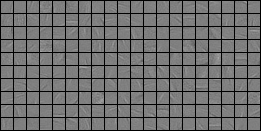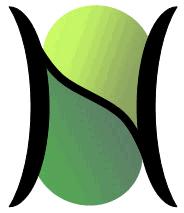Fundamentally different concept of a representational (basis) of features in Sparsey compared to that in the localist "sparse basis" (a.k.a. "sparse coding") concept.
| Sparsey (Fig. 1) | Localist Spatiotemporal Basis (Fig. 2) (Original Figure Link) |
|---|---|
 |
|
| Characteristic | Sparsey | Localist |
|---|---|---|
Origin of any single feature (basis element) |
A single input pattern experienced, even with a single trial. |
An average of many inputs experienced. |
Content of any single feature |
• Multiple spatial phases, e.g., multiple edge segments at different locations in the aperture are possible (though there are no instances of such in this particular example).
• Multiple orientations, e.g., the orientation and curvatures of edge segments in Fig.1 change greatly over the temporal extent (in this case, just two discrete time steps).
• Multiple temporal frequencies, i.e., the speeds with which edges move (translate, rotate) can vary within the relevant temporal extent (though, with the small spatial extent of apertures in Fig. 1 (4x4 pixels) and with a temporal extent of only two time steps, this variability cannot be seen in Fig. 1.
• Multiple spatial frequencies. Possible in general, but only likely at higher aperture scales.
Because each Sparsey feature is derived from a single event (and not an average over multiple events), any single feature may have multiple “modes” on all of these stimulus dimensions. |
• Single spatial phase
• Single spatial frequency
• Single orientation
• Single temporal frequency
In general, a localist feature such as these is unimodal (e.g., Gaussian, Gabor) on each of the encoded stimulus dimensions. This is consistent with the underlying idea of this approach which is that a feature should properly be an “average” (i.e., statistical regularity) of some sort. |
# of units in the code of any single feature |
Many. Q, where Q [the number of WTA competitive modules (CMs), which we propose as analogs of cortical minicolumns] is order 100 in real macrocolumns. |
One. |
# of basis features participating in the representation of any single input image to a given single macrocolumn |
One. (But again, that one active feature is represented by Q active units.) Thus, this type of representation is called “sparse” specifically because the number of physical units active in representing any one input to a macrocolumn is small compared to the total number of physical units comprising the macrocolumn. But, these representations can also be sparse in the sense to the right as well. That is, as noted above, any single active SDC represents the presence of multiple (but, for most natural inputs, a smallish number of) spatial phases, spatial frequencies, orientations, and temporal frequencies. |
Few, several. This type of “sparse basis” or “sparse code” is called “sparse” for two reasons: 1. The number of features in a sufficient basis is small compared to the number of all possible features definable on the input space.
2. The number of features active in the representation of any one input is small compared to the number of features in the basis.
|
